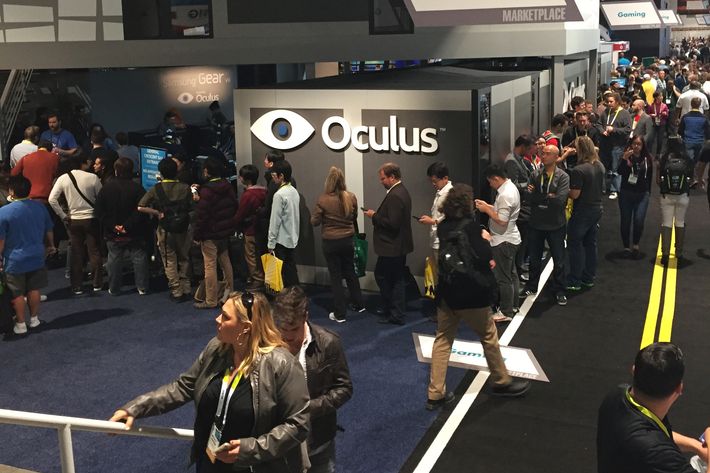
Like any good American child, I dreamed that adulthood would mean living in a house filled with stuff from the SkyMall catalogue. My dog would eat from an elevated dog bowl and play in a yard stalked by a garden yeti. I would offer my guests an all-edge brownie, and perhaps a drink delivered by Roswell, the alien butler. An automatic cereal-dispenser would portion my breakfast. Lighted slippers would guide my way to the bathroom or the refrigerator at night. On a long-haul flight, I would gently tip forward onto my SkyRest to nap, the envy of all the other passengers.
It was a vision of a world filled with junk that met needs I never knew I had. And it was one I was plunged back into this week, stalking the endless, carpeted halls of the Consumer Electronics Show in Las Vegas, featuring 3,600 exhibitors over 2.2 million square feet.
An admission to you, dear reader: I came here to write a catty piece about the most useless things I saw at CES, the mobile karaoke games, the USB-powered beer koozies, the backwards keyboards. And there are many, many ridiculous and unintentionally hilarious items to be found at this consumerist orgy. But gallivanting from booth to booth, I found myself more delighted than anything else. The future is here. It is ridiculous. But if you just go with it, it is awesome.
Perhaps you are a tired mother whose baby refuses to quiet down. Perhaps you would like a cradle that rocks itself, as commanded by your smartphone? It is one of dozens of appliances that got their app hookups at CES, including washing machines, doorbells, coffee machines, plant feeders, locks, and smoke detectors. The “internet of things” is a loathsome phrase, but it is also here, and pretty cool, at least for those of us who forget to water our plants and turn down our thermostats.
Perhaps you work on your feet during the day, and your back hurts. Perhaps you would like to step onto what looks like one of those scales they have in the foyers of grocery stores. It will start up. It will start to rapidly jiggle your feet up and down, left-right-left-right. The feeling will be strange at first, a harmonic thrumming through your body. But you will find yourself relaxing a little, releasing the tension from your lower back, from your hips and knees and shoulders. You will roll your head from side to side. You will arch your back. You will find yourself half-bent, mechanically twerking in a room full of technology buyers. You will not mind.
This is the Dr. Fuji Cyber Body Slimmer, which retails for $3,999 and is meant to slim you down. I hopped off no thinner, alas, but fantastically invigorated and relaxed.
But not quite relaxed enough. CES, it turns out, hosts a number of competing advanced massage chairs. With these babies — which tend to retail for $5,000 to $8,000 — you sit not on the chair but in the chair. It envelops you. You slide your arm into little hot-dog-bun-type rests. You push your feet into the same. You hit a button, and the chair tips you backwards. It then massages your whole body simultaneously, rocking you, stretching out your hips, moving your legs, pulsing your fingers, and kneading your back. I had a little romance with three of these in one afternoon. I cannot tell them apart. I cannot tell you which one to buy. But I know what I would do if I had Oprah money and a free garage bay.
I saw row after row of other marginally improved gadgets, too. I sampled selfie stick after selfie stick. There were endless rimless televisions as thin as your smartphone, and one with impressive 3-D technology. (The wave! It’s really crashing over the surfer!) There were video displays with frighteningly bright technicolor. There was a seemingly endless array of freakishly good speakers, whose sonic booms shook the floors.

And there were a few true jaw-dropping technologic marvels. The longest line I saw at CES was a two-hour one for a demo by Oculus VR, the virtual-reality company acquired by Facebook. Its two-story “booth” at the trade show was the size of most stand-alone retail stores. I was led up a staircase to a small, dark room, where I stood on a foam mat. “Try to stay on it,” an assistant said, slipping a prototype of the Crescent Bay headset over my head.
You find yourself immersed in a virtual-reality world where you can look up, down, and behind you, and where sounds seem to emanate from specific points within that space. You’re suddenly on an alien planet. You’re in a museum, a dinosaur rushing towards you. You’re high up on a building, terrified of falling. At the end of the seven-minute demo comes the true tour de force. You float forward through a cityscape in slow motion, like a ghost. Bullets fly past you, shockwaves rippling behind them. A wrecked car soars just overhead. At the end of the block, a huge mechanical alien squares off against you.
It gave me a spell of nausea that took an hour to wear off but also left me breathless. I imagined a Spielberg war film that took you into the middle of the killing fields, or a history documentary that let you move through ancient castles and halls. In a matter of years, I expect, we will watch and participate in all sorts of media through these kinds of headsets. And it will be awesome.
But the most immediate use for Oculus’s headsets is for immersive video-gaming. To that end, I tried out a Samsung headset powered by Oculus technology. You slip it on and become a spaceship fighting a battle in three dimensions, shooting at your enemy by tapping your temple. Behind Oculus’s encampment, a company called Virtuix was holding a demonstration for its Omni gaming system. Its gamers wore Oculus headsets and walked on concave platforms that let them run in place through a game, turning around, backtracking, stalking, and shooting.
Killer massages. Super-cool video games. Fancy cars. Better selfies. Home appliances you can control from the comfort of your couch. The vision of the world presented at CES is one of mostly marginal improvements, and predominantly of superficial delights. (It seems fitting that the convention is held in Las Vegas, the spiritual home of superficial delights, a town where every gambler is lucky and every club is “upscale.”)
If I were being churlish, I would argue that the trade show acts as powerful evidence of an old critique of Silicon Valley: that it spends far too much time and money fixing problems that nobody has and making products that nobody needs. It’s a little too SkyMall, and too little Scientific American. But who can be churlish after being serenaded by an automaton and massaged by a robot chair? After shooting a gun in outer space? After turning off a lightbulb from a smartphone?
It’s my childhood dream come to life, and it is a whole lot of fun.





























